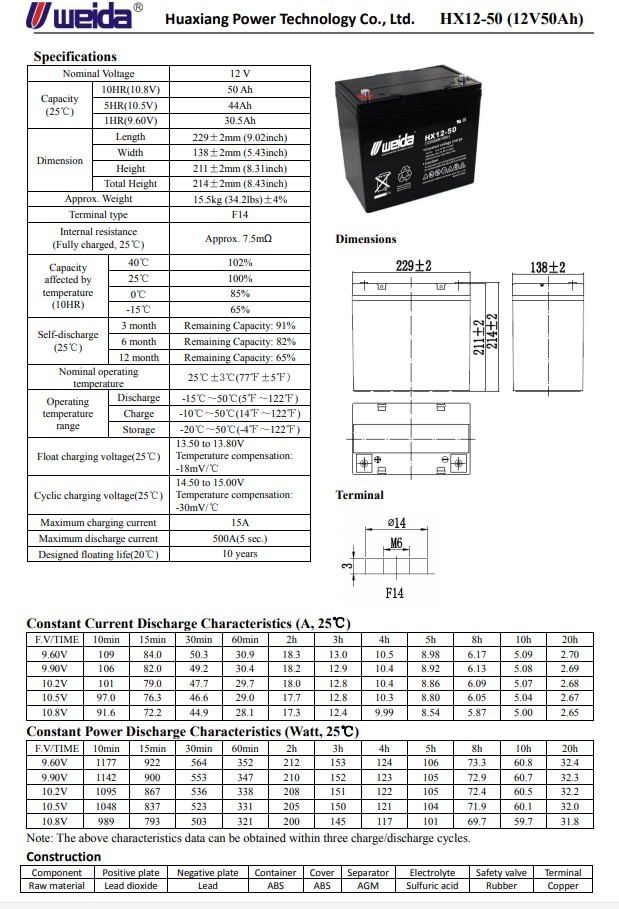威达蓄电池HX12-12/12V12AH
内阻
电池内阻包括欧姆内阻和极化内阻,极化内阻又包括电化学极化与浓差极化。内阻的存在,使电池放电时的端电压低于电池电动势和开路电压,充电时端电压高于电动势和开路电压。电池的内阻不是常数,在充放电过程中随时间不时变化,由于活性物质的组成、电解液浓度和不时地改动。
欧姆电阻恪守欧姆定律;极化电阻随电流密度增加而增大,但不是线性关系,常随电流密度和温度都在不时地改动。
在220V到260V之间,母线电压不受开关电源与逆变器控制的,所以在负载电池母线上挂上3个电池组,稳定负载电池母线,作为定压的浅功率点,用于充电柜的电池电压矫正。随着电池组本身容量的降落,对整体测试效果简直无影响,电池寿命到了改换即可,依据母线特性,若电池欠压严重,在系统闲暇时还会给电池组充电。
极化现象是一切蓄电池充电过程中的共有现象。所谓极化,就是指电流经过蓄电池时,正负极板外表电位的挪动。当蓄电池补充充电时.其内部将有三种极化现象产生:欧姆极化、电化学极化相离子浓差极化。下面逐一对这三种极化停止讨论。
自在放电:由于电池的部分作用形成的电池容量的耗费。容量损失放置之前的容量之比,叫做蓄电池的自在放电率

Internal resistance
The internal resistance of the battery includes ohm internal resistance and polarization internal resistance, and the polarization internal resistance includes electrochemical polarization and concentration polarization. The existence of internal resistance makes the terminal voltage of the battery lower than the electromotive force and open circuit voltage, and the terminal voltage higher than the electromotive force and open circuit voltage during charging. The internal resistance of the battery is not a constant, and changes from time to time during the charge and discharge process, due to the composition of the active substance, electrolyte concentration and changes from time to time.
Ohm resistance obeys Ohm's law; The polarization resistance increases with the increase of current density, but it is not linear, and often changes with current density and temperature from time to time.
Between 220V and 260V, the bus voltage is not controlled by the switching power supply and the inverter, so hang 3 battery packs on the load battery bus to stabilize the load battery bus as a shallow power point of constant voltage for the battery voltage correction of the charging cabinet. With the fall of the capacity of the battery pack itself, there is no impact on the overall test effect, the battery life can be replaced, according to the characteristics of the bus, if the battery undervoltage is serious, the battery pack will be charged at the system's leisure.
Polarization is a common phenomenon in all battery charging processes. The so-called polarization refers to the movement of positive and negative plate surface potential when the current passes through the battery. When the battery is recharged. There are three kinds of polarization phenomena: ohmic polarization and electrochemically polarized phase ion concentration polarization. Let's stop discussing these three polarizations one by one.
Free discharge: The consumption of battery capacity due to the partial action of the battery. The ratio of the capacity before placing is called the free discharge rate of the battery





 QQ在线客服
QQ在线客服